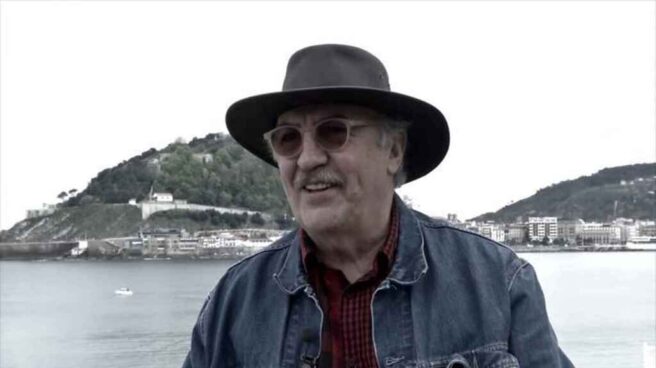

Kote head.
Kote Cabezudo, a photographer from San Sebastian, was sentenced to 28 years and two months in prison for one offense of rape, another for sexual assault, six for child pornography and two for fraud.
In its 339-page indictment, to which EFE had access, the Court of the First Section of the Court of Guipuzcoa, composed of María José Barbarín, Ana Isabel Moreno and rapporteur Augusto Maeso, holds Cabezudo responsible for a total of ten crimes, although this exonerates him in 217 crimes that he was accused of.
In fact, during the trial in Sebastian from March 7 to April 13, prosecutors demanded more than 250 years in prison for the defendant, while the private prosecution, representing fourteen of the 17 victims, increased his request to 2,627 years. years in prison.
Cabezudo’s sentence of 28 years and two months in prison exceeds the legal threshold of twenty years established by the Penal Code, so the sentence declares that eight years and two months exceeding that limit have elapsed.
At the same time, the judicial text also imposes on the convicted person the obligation to reimburse the injured parties 116,000 euros.
According to TSJPV in a press release regarding crimes against sexual freedom, the court order states that the defendant committed one rape and another sexual assault against two different victims who were of legal age at the time of the crime. .
The crime of rape is considered committed when, during the recording of a video of sexual content, the defendant “persistently penetrated” the vulva of one of the models, until which she tried three times to withdraw her hand, but he “resisted physical pressure on her and continued” to do so “without consent.”
A sexual offense is considered committed against another of the models, when, during a photo shoot, the accused inserted his fingers into her vulva without her consent.
The verdict in both cases explains that it is one thing to voluntarily go to the photographer’s studio so that he can take pictures of a sexual nature, receiving money for this, and quite another to agree that during the sessions the photographer “does as many actions on the body of a woman and over her genitals.
“Both models showed the defendant their opposition to these particular practices, but he did not respect their sexual freedom and carried them out without their consent,” he emphasizes.
With regard to crimes involving the production of child pornography, the ruling looks at both individually and as a whole the available evidence to determine the age of the models at the various times they were photographed by the defendants and to determine whether the content of the images matches what you took of them, should be considered pornographic.
To this end, the judgment analyzes the statements of the parties, the contracts they signed, and elements such as the name of the files in which the defendant stored the images, their metadata, and files containing various audio recordings of video recordings made by the defendant. the defendants were found and are temporarily accommodating them thanks to the examination carried out by Ertzaintza.
Regarding the alleged pornographic nature of images, the document considers as such “any material that visually represents a minor engaging in sexually explicit behavior, real or simulated”, in addition to “any depiction of the genitals of a minor for primarily sexual purposes”. .
Thus, the commission of this crime against six victims was established as proven, but he was convicted in only one of the cases, given that the remaining five have already been sentenced.
The magistrates are also accredited that the defendant distributed materials on his web pages that corresponded to four other victims, for which he was convicted of four unforeseen crimes of distributing child pornography.
In addition, with respect to another of the victims, it is declared proven that the defendant was in possession of this material with the intent to distribute it, for which he is also convicted of another crime of possession for distributing child pornography.
For victims who have reached the age of majority when they posed for the defendant, the verdict precludes it from being proven that they were “deceived or threatened” by them.
To do this, the judges analyze agreements signed by the parties, in which the models transferred their rights to the image to the defendant and allowed him to publish the images received from them on their web pages in exchange for the price paid by the defendant. them for each posing session.
They also examine images taken by their photographer and rule out that he took them secretly, without the knowledge of the models, since the pictures show that “they knew they were taken”, given that “they look at the camera, they turn and in some cases spread your legs.
The ruling also takes into account that the models began to be photographed by the defendants “when they so desired” and in many cases continued to come “even for years” and stopped being photographed “when they also voluntarily decided”.
For all of these reasons, he does not consider confirmed facts to be “image capture” fraud crimes or crimes against privacy.
However, he believes that the two crimes of fraud were committed later, as two of them bought their rights to the image from the defendants in exchange for the latter removing their images from their web pages and attempting to remove them as well. from other Internet portals not associated with it.
The two models paid the agreed price to the defendant, who removed the images from their web pages but did nothing to remove them from others, “which he had no intention of doing at any time.”
Finally, the verdict denies “unfounded” requests made during the trial by private prosecution attorney Mario Diez, who asked the court of protection to deduct testimony for the defense expert at the hearing and asked that he be authorized to file a defamation complaint against one of the witnesses.
Source: El Independiente